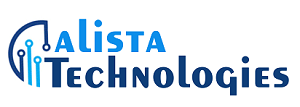
Investigating the Advantages and Difficulties of Moving to an IoT Cloud Platform
The Internet of Things (IoT) is a technology trend gaining popularity in various industries. IoT enables physical devices to be connected and communicate with each other over the internet, creating an intelligent network of devices. On the other hand, cloud computing involves delivering services over the internet. Combining IoT with cloud computing results in IoT cloud platforms, which are increasingly popular in various industries. This blog will investigate the advantages and difficulties of moving to an IoT cloud platform and how it can benefit the agriculture industry, focusing on smart farming.
Advantages of Moving to an IoT Cloud Platform
- IoT cloud platforms’ scalability and flexibility provide businesses a scalable and flexible solution. They can expand or reduce their infrastructure as their needs change, saving costs and increasing efficiency. For example, a business can increase its storage capacity during peak times and reduce it during off-peak times, thus only paying for the resources it needs.
- Improved efficiency and productivity IoT cloud platforms can automate business processes, leading to improved efficiency and productivity. IoT sensors can collect data, which can be analyzed in real-time to identify issues early and take corrective measures. For example, a manufacturing plant can use IoT sensors to monitor equipment, identify faults, and schedule maintenance before equipment fails, avoiding unplanned downtime.
- Real-time monitoring and analytics IoT cloud platforms enable businesses to monitor their operations and analyze data to make informed decisions. This can provide valuable insights into business operations, customer behavior, and product performance. For example, a retailer can use IoT sensors to track customer behavior, analyze data, and adjust marketing strategies accordingly.
- Enhanced security and data privacy IoT cloud platforms provide built-in security features that protect data from unauthorized access.. IoT cloud platforms also provide a secure data storage and processing environment, reducing the risk of data breaches.
- Cost-effectiveness IoT cloud platforms can reduce infrastructure costs by providing a pay-as-you-go model. This means that businesses only pay for the resources they need, reducing the need for hardware, maintenance, and support costs.
Difficulties of Moving to an IoT Cloud Platform
- Integration challenges with existing systems and hardware Integrating an IoT cloud platform with existing systems and hardware can be complex and challenging. Businesses must ensure that their systems and hardware are compatible with the new platform. This can require specialized skills and can be time-consuming.
- Data management and processing complexity IoT cloud platforms generate vast amounts of data that require proper management and processing. This can be a challenge for businesses that lack the necessary resources and expertise to handle the volume and complexity of data generated by these platforms.
- Connectivity and network availability IoT cloud platforms require a reliable internet connection to operate efficiently. Businesses operating in areas with poor connectivity or limited network availability may face challenges when moving to an IoT cloud platform.
- Skillset requirements and training for employees Moving to an IoT cloud platform requires specialized skills and expertise. Businesses must invest in employee training and development to ensure they have the necessary skills to manage and operate the new platform.
- Dependence on third-party providers Moving to an IoT cloud platform requires businesses to rely on third-party providers for data storage, processing, and security services. This can create dependence on third-party providers and increase the risk of vendor lock-in.
Case Study: Smart Farming and IoT Solutions
Smart farming is an industry that can benefit greatly from IoT solutions and cloud platforms. The agriculture industry faces limited resources, unpredictable weather conditions, and the need to produce more food to meet the growing population’s demand. IoT solutions can provide real-time data on weather conditions, soil moisture, and crop health, enabling farmers to optimize their operations and increase productivity.
IoT sensors can monitor soil moisture levels, temperature, humidity, and other environmental factors. IoT devices can also be used to monitor the health of livestock, providing real-time data on factors such as weight, temperature, and activity levels.
However, implementing IoT solutions in smart farming comes with its challenges. One of the main challenges is connectivity, as many farms are located in remote areas with limited network availability. Data management and processing can also be challenging, as the volume of data generated by IoT devices can be overwhelming.
Conclusion
Smart farming is an industry that can benefit greatly from IoT solutions, but businesses need to be aware of the challenges associated with implementing these solutions. Moving to an IoT cloud platform can benefit businesses, including improved efficiency, scalability, and real-time analytics. However, businesses need to carefully evaluate the decision to move to an IoT cloud platform, considering the potential difficulties and challenges.
The future outlook for IoT solutions and cloud platforms in different industries is promising, with more businesses embracing the benefits of these technologies. However, businesses must ensure they have the resources and expertise to manage and operate these platforms effectively.
FAQs
- What is the difference between IoT and cloud computing? IoT refers to the interconnectivity of physical devices and the internet, whereas cloud computing refers to the delivery of computing services over the internet.
- How can IoT solutions benefit the agriculture industry? IoT solutions can provide real-time data on weather conditions, soil moisture, and crop health, enabling farmers to optimize their operations and increase productivity.
- What are the challenges faced by businesses when moving to an IoT cloud platform? Businesses face challenges such as integration with existing systems, data management and processing complexity, connectivity, skillset requirements, and dependence on third-party providers.
- Can small businesses afford to move to an IoT cloud platform? Yes, small businesses can adopt IoT solutions and cloud platforms by adopting a pay-as-you-go model, reducing the need for expensive hardware and infrastructure.
- How can businesses ensure the security of their data when using an IoT cloud platform? Businesses can ensure the security of their data by implementing proper security measures such as encryption, access controls, and firewalls. They can also ensure that they have proper agreements and service level agreements in place to mitigate the risks associated with dependence on third-party providers.






